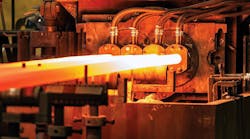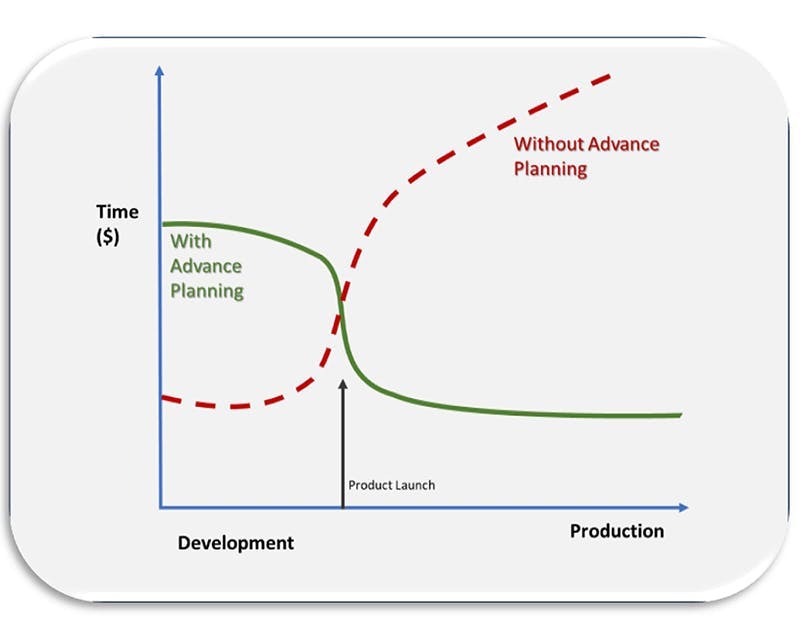In the 1990s, automotive OEMs partnered to develop a structured process for outlining product expectations, quality and requirements for their suppliers. Known as Advanced Product Quality Planning (APQP), this standard process implemented across the industry helped to eliminate ambiguities and misunderstandings, prevent production delays, stop production of inferior parts, and reduce potential cost escalations.
APQP consists of five phases outlined in the graphic below, which provides a framework that ensures product consistency and reliability for the automotive manufacturing industry.
The APQP process includes a total of 37 documents for each project across five process phases, for each product/part. Engineering Change Notices (ECN) and revisions require updates to certain project documents. In most of these documents, there are also multiple stakeholders involved at different stages. It can be difficult to ensure that all forms are changed correctly, as too often Excel documents for each of APQP forms are developed, maintained, and updated using cumbersome document management systems.
During audits, it’s not unusual for companies to use the APQP method to find costly variances — due to team members using wrong design revision levels and drawing numbers, etc. Not using the correct revision or drawing results in poor product quality, longer lead times, and an overall increase in waste and cost.
According to the Automotive Industry Action Group, up to 90% of Failure Mode and Effects Analysis (FMEA) and control plan spreadsheets contain mistakes. This means that design failures (DFMEA) or process failures (PFMEA) are not accounted for in the control plan. Such mistakes not only cost time and money but can damage the reputation of the manufacturer, because of delayed timelines, inaccurate data, and inefficient process management.
Managing documents and ECNs
Why do these errors occur? The nature of APQP and PPAP documentation is that each document connects to another in some way.
For example, the failure mode that you find on one product could also apply to that entire part family in some cases. After the DFMEA (design failure) and PFMEA (process failure) are completed, the control plan can be created to account for those failure modes. Each different document is an input or output, or some type of link to another document, where one mistake can have a cascading effect across many different parts and documents.
Challenge #1: You’re managing change with a paper-based process. In such cases, paper is very difficult to manage and is not an efficient means of communication in the new age where everything is digital, and stakeholders are increasingly more scattered geographically. And it is still prone to errors. What happens if a folder falls into the wrong hands?
Challenge #2: The supply chain is not integrated into the ECN process. Here, general communication and timely alerts/notifications with supply chain stakeholders from different departments, internally and to external suppliers and outsourced partners, can be very difficult, tedious, and time-consuming without some automation.
Now, many OEMs have begun requesting their suppliers to use FMEA software. The Ford Customer Specific Requirements release, Jan. 3, 2022, made it official for automotive suppliers to use FMEA software.
How technology helps manage APQP
The ever-changing macro factors over recent years – like global pandemic, regional wars, supply-chain disruptions, chip shortages, geopolitical tension and more – have emphasized the need for organizations to use technology to remain flexible, scalable, and efficient as circumstances change. While these issues are out of our control, 1) understanding how to manage, and 2) having the ability to adapt, are leading indicators for suppliers who will succeed in the future.
Proper use of APQP can dramatically reduce the cost of poor quality and focus organizations on prevention of potential problems rather than reacting to incidents. With proper planning, development time can be made shorter, allowing manufacturers to recognize revenues faster.
Implementing software to manage APQP can:
- Digitizes documents, which allows stakeholders in production, quality, sales, development, as well as supplier teams, to work with the latest accurate forms like FMEAs, control plans, inspection reports, etc.
- All Engineering changes are tracked centrally and available for global team members to avoid failures related to wrong revision levels.
- Record/track part-quality issues and alert the right stakeholders in real-time for continuous improvement.
- Manage project timelines and customer requirements with clear assignment to team members, and any delay can be traced back to individuals/tasks, for clear accountability.
- Standardize the formats, timelines and templates that are used by engineers globally, when managing customer projects and kick-offs.
- Enable organizations to customize and configure workflows to fit their business processes.
- Allow for easy escalations and approvals to management and externally stakeholders proactively to resolve issues.
- Reduce the reliance on historically disparate channels like emails, shared folders, excel files, and more.
While APQP management and production quality software have progressed very little over the last 30 years – this new class of software tools is allowing team members around the world to work collaboratively and in real-time to maintain intellectual property documents, project documents, improve project lead times, and allow flawless launches, which OEMs and customers expect. Whether your company has divisions across the world, or one small plant, software and technology will enable you to scale and work efficiently.
Sahil Shah - sahil.shah@meshworks.com - is the president and CEO of MESH Works.
Sahil Shah is the president and CEO of MESH Works, a cloud-based sourcing, procurement, and quality tool for metal part manufacturing.











